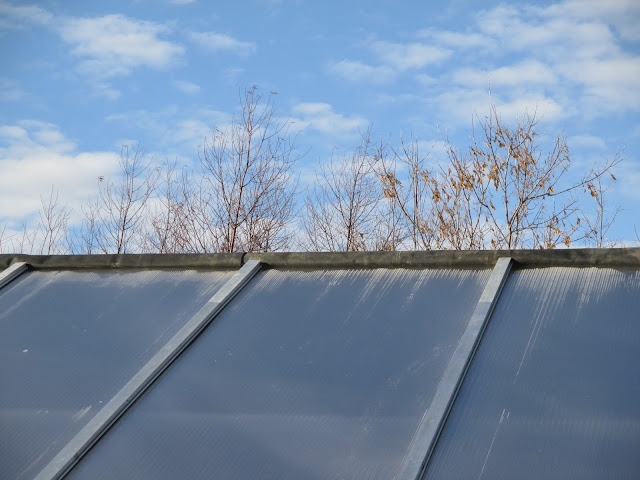It's December 7 and this morning a third of the pond was covered with ice. By noon most had melted. Yesterday we had an otter over two feet long visit us. It stayed only a few hours, scampering around the dock and diving to catch lunch before moving on.
 |
| View to the West Showing Ice Cover on Far Side |
 |
| Pond View to the North, With the West Third Covered With Ice |
This autumn has been remarkably mild, with more than 1,000 fresh, unfrozen Granny Smith apples still hanging on trees. We have dehydrated more than 100 pounds and have stored many times that amount in bins. Since we don't need any more apple sauce or dried slices, we'll probably juice them and make hard cider that will last more than a year. That way we can enjoy apples even if next year's crop fails.
 |
| Apples on Trees With Heavy Frosted Grass in Foreground |
A remarkable plant started blooming last week: A Winter Rose or Hellebore that is an amazing evergreen perennial with handsome, deep green foliage and pretty flowers that shine through winter and into spring. Our other flowers have frozen and are gone but this one is thriving! We'll have to propagate it and find other colors to help us through cold winters! We'll have to plant them where snow doesn't pile up. This flower will spend most of the winter under the snow that gets piled along the driveway unless we protect it and avoid shoveling on top of it.
 |
| Winter Rose |
 |
| Closeup: Winter Rose |






























































